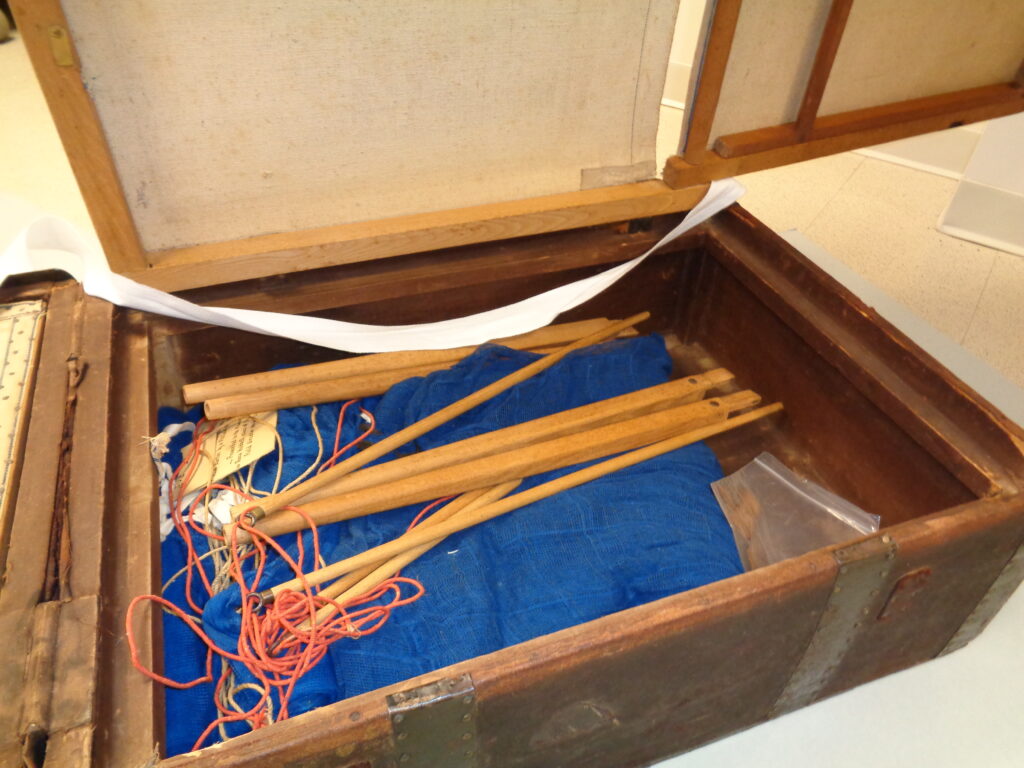
Clara Barton’s inspiration for starting the American Red Cross was cultivated while caring for the sick and wounded on Civil War battlefields. As a unique artifact from her time, her trunk bed is a great reminder to appreciate stories told through any medium – whether it’s on paper, through a photograph or even a foldaway bed.
WHY THIS BED? Barton was determined to carry out the work she saw as necessary to help get supplies and medical care to the Civil War battlefields – so determined that she convinced the government and the Army to give her passes to go behind military lines.
According to Red Cross records, Barton’s situation led to a firm in Philadelphia for a trunk bed so it could be used on the battlefield as she tends to wounded soldiers.

CONSTRUCTION AND HISTORY Also called a camp bed, the piece is constructed to fold into a traveling trunk, complete with a wooden frame and tooled leather. To use the bed, Barton would have opened up the trunk into three sections – hinged on the short sides of the trunk as it opens – to reveal heavy canvas attached to the frame with nails.
Through conservation work on the bed in 2004, a sealed compartment was accessed to reveal slender poles that attached to the bed, and bright blue mosquito netting used as a canopy for additional protection.

THE MOVE While Barton was not a trained nurse, she provided medical care for the wounded during the Civil War. Therefore, the National Museum of Civil War Medicine in Frederick, Maryland is a fitting location to display the bed in one of their galleries as part of a loan agreement with the Red Cross. This is the same museum that manages the Office for Missing Soldiers, an effort Barton started and ran out of the third floor of a building in Washington, D.C. after the Civil War ended.
